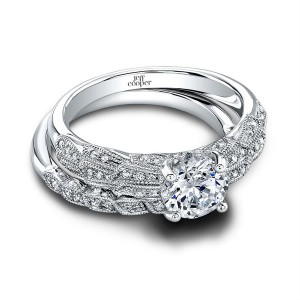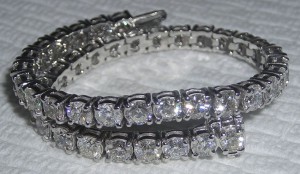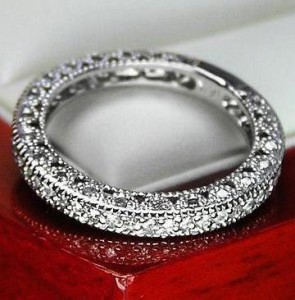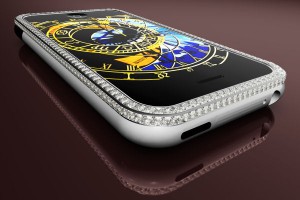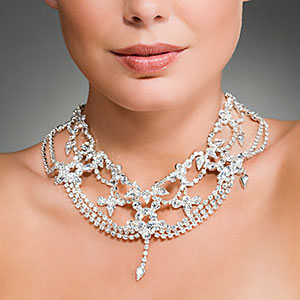
The following is an article written by Suzanne McGee from the MSN Money Website. It is a wonderful follow-up to the May 10 NYC Diamond Blog post ‘Diamond Mutual Funds are Coming’, but with a fascinating new twist. In the last paragraph I added in bold a suggestion that as a result of the introduction of Diamond Funds, consumers might just receive something they have desired for decades. That is the first ever Spot Market Price for Diamonds.
Are diamonds an investor’s best friend?
The collapse of gold prices earlier this spring seems to have been met with a kind of muted elation from those promoting the idea that diamonds, like the precious metal, could become a recognized asset class and another form of haven investment.
It’s perfect timing for the diamond industry: With an exchange-traded fund backed by diamonds due to roll out sometime next year, once it has received the stamp of approval from the U.S. Securities & Exchange Commission, supporters of the idea admit that they need to educate investors in North America on the advantages of diamonds as investments.
“America views diamonds primarily as pieces of jewelry; in places like India, China and Russia, people traditionally have viewed them as investible assets,” says Kristopher Schellhas, managing partner and co-founder of the Los Angeles-based Investment Diamond Exchange, which offers a marketplace for trading the precious gems. Schellhas is correct about that: For centuries, diamonds have been a way for the wealthy or merely affluent to make their riches readily transportable in times of peril. But does that make them a good investment idea?
Until now, investing in something that is simply called a “diamond” has been a bit like buying a work of art referred to as a “Picasso.” Just as you don’t know whether the latter is a reproduction, a sketch by the artist himself on a piece of newspaper, or the massive “Guernica,” in the case of diamonds an investor wants to be sure he or she is getting something of value, not a tiny chip off a muddy, poor-quality stone.
One part of the conundrum is in the process of being solved. GemShares, the company behind the proposed diamond ETF, last year patented a global standard for investment-grade diamonds. “This was done specifically so they could be used as financial instruments,” says Schellhas. “It’s a precursor for diamonds being publicly traded.”
The goal is to create a homogenous group of diamonds with clearly defined characteristics that are indistinguishable from each other — a range of sizes is fine, but all should be a generic round brilliant cut, and have a top-tier clarity rating. (If you want the full details, check out the patent application). With the patent in place, GemShares has created something as close to a commodity as may be possible in the world of precious stones, given that no two diamonds ever will be identical.
But simply being objects of value and becoming fungible enough to be defined as a tradable asset class won’t be enough to make diamonds a mainstream commodity investment — for reasons that go well beyond their very speculative nature.
Gold, for instance, has been traded on open markets for generations, resulting in a benchmark price for the physical item that has been transparent. In contrast, the history of diamond pricing is murky indeed: For most of the last century or more, prices were largely under the control of the De Beers syndicate. When the market changed, De Beers simply refocused its marketing strategies to keep prices high. For instance, when an influx of new, smaller diamonds from the former Soviet Union hit the market in the 1950s and onward, it pushed the idea of the eternity ring, made up with lots of smaller diamonds. An open market has only begun to develop since 2005, when De Beers finally agreed to resolve several U.S. class action suits by plaintiffs alleging price-fixing. In other words, investors looking for a history of price discovery will seek in vain.
The question of near-monopolies in the diamond mining industry still exists as an investment risk, according to the diamond ETF prospectus filed with the SEC. “Large companies represent a sufficiently large share of the diamond supply and intermediate demand in the production cycle,” the prospectus spells out, that their activities may weigh on prices. Another issue that Schellhas identifies as a plus for the ETF is labeled a risk in the prospectus. The ETF will be backed by a physical inventory of gems (just in case you want to take delivery of your investment at some point in time) and not just mirror the performance of the assets on paper. That means that GemShares will be buying diamonds to deposit into the trust backing the ETF.
To Schellhas, that’s good news: it will buoy diamond prices. But that may also mean that the price of the initial units will be higher (because of the larger prices paid for the diamonds) and that since this demand isn’t sustainable or ongoing, there may be a selloff in the aftermarket.
Then there is the pesky question of liquidity, both for diamonds themselves and for the ETF.
Until now, most diamond investment vehicles that have been created have been private pools, units of which have been sold to institutions or ultra-wealthy investors. Many of those pools focus more on large, rare high-quality stones than on the smaller “commodity” diamonds of the kind that GemShares proposes using as a base for its ETF. There’s a reason for this:
The diamond investment market is still embryonic and risky for those who aren’t pros.
For ordinary investors — the kind for whom a loss can be a real setback — it’s too early to contemplate investing in diamonds, however disappointed they may be with gold prices right now.
Yes, there is potential for diamond investing to grow. As Schellhas points out, while about 40% of the gold market is dominated by speculators or investors, only about 1% of the diamond market is made up of speculative activity. But speculation isn’t long-term investing. And even if diamond supply does remain static while the number of middle-class households grow worldwide, that isn’t to say that those middle-class consumers will choose to spend their new disposable income on diamonds.
Questions of price transparency and liquidity alone make this a risky bet. It’s telling that Schellhas describes the ETF as the vehicle that will end up creating the first spot market price for diamonds. Typically, a commodity-related structured investment product makes its debut in the wake of the establishment of a reliable spot market with a history of price transparency. This time, the promoters of the diamond ETF seem to be doing it the other way around, relying on the product itself to generate enough buzz to make it a success. That’s hardly the kind of risk-free strategy you’d want to find in a safe haven investment.

